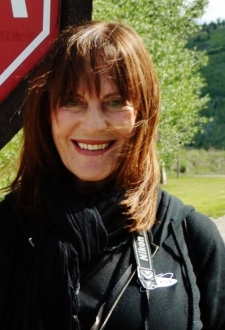Wild. Wild? Not a word you’d typically associate with Ireland. Pubs? Check. Shamrocks? Check. Guinness? Oh definitely, but wild? Yes. It’s the sea, you see.
A place where rugged rules
At the very edge of Europe, this newest odyssey, the Wild Atlantic Way, extends for 1,600 miles along Ireland’s western seaboard. It is the world’s longest, most culturally rich coast, stretching from Malin Head in County Donegal down to Kinsale in County Cork. Here the Atlantic Ocean’s power has carved a coastline of raw beauty with sharp cliffs, wave-capped inlets, barren beaches and stately lighthouses dotted along the way. Of this land one long-time local said “…with myriad miles of uninterrupted ocean, no windbreak and no reefs, there’s just a wide, wild, open space that allows the sea to grow and grow before it comes to a sudden stop on our shore.” The Wild Atlantic Way is as close to exploring an open-air museum as you’ll get — exceptional landscapes, stunning flora and fauna — and packed with history and adventure, as I was about to find out.
A walk on the wild side —
in Viking footsteps
Where the Shannon River meets the Atlantic Ocean lie the Scattery Islands in County Clare. After a short ferry ride, there before me in all its ruined glory was St. Senan’s Monastery, an ecclesiastical center founded in the sixth century and invaded by Vikings centuries later. It is today a windswept, desolate place, the blustery chill in the air perfectly matching the austere surroundings. I walked through an ancient burial ground festooned with Celtic high crosses made of granite, some 1,000 years old. Then, the small ferry hustling across the water to transport me once more to life — and warmth — was a welcome sight.
Catch and cook
In Dingle Harbor, County Kerry, the Atlantic offers an abundance of fish. Although I’d never before held a fishing rod, it seemed simple enough as Tom, the boatman, baited and gently placed my rod overboard. I asked how I’d know if I had a bite. “Oh, you’ll know,” was all he said as he walked away. He was right. I felt a strong tug on the line, began reeling and suddenly, flopping before me — a large Ling fish. (When I returned home and told this tale, I predictably fell into that time-honored tradition of stretching my hands wide and saying “this big.”). Although my Ling would win no awards in a fish beauty contest, once cooked, it was yummy.
The Cliffs of more
Oh yeah, Ireland’s most visited natural attraction, the Cliffs of Moher, has everything you’d expect — and more. Local historian and farmer Pat Sweeney was my guide for a three-hour walk above the Doolin Cliffs stretching for five miles along the Atlantic coast of County Clare. The briny smell of the sea was intoxicating, the vertiginous paths that hovered along cliffs with 700-foot drops, daunting; and green fields strewn with sheep and cows, captivating. The constant cry of seagulls overhead and ferocious waves pounding rocks below was nature at its most elemental.
‘Don’t let it be forgot…’
At the very edge of Europe, off the Dingle Peninsula lie the mystical Blasket Islands, a small archipelago renowned for its storytellers. Here lived a tiny population steeped in traditional culture that remained strong in an isolated, rugged community, living simply from the land and sea. Visiting The Great Blasket Centre with its galleries of artifacts and portraits of inhabitants, I felt the toil of their hard lives and had a keen appreciation for these long-ago people. Due to a declining population, the islands were abandoned in 1953. As their numbers dwindled, native author Tomas O’Crohan wrote the book “The Islandman,” in part “so that some record of us might live after, for the likes of us will never be again.”
The Blasket Islands were the home of the noted Irish writer Peig Sayers. Born in 1873, she was taken out of school at age 12 and spent several years in the nearby town of Dingle as a domestic servant. She moved to the Blaskets after marrying Padraig O. Guithin, a fisherman. As she was illiterate, she dictated 350 ancient ghost, religious and folk legends to the Irish Folklore Commission. Sayers’ biography begins with this bleak yet poignant passage: “I am an old woman now with one foot in the grave, the other on its edge. I have experienced much ease and much hardship from the day I was born until this very day. Had I known in advance half or even one third of what the future had in store for me, my heart wouldn’t have been as gay or courageous as it was in the beginning of my days.” The book was chosen as text for teaching and researching Irish in many schools in the country.
This fascinating author continued to live on the island until 1942. She died in County Kerry in 1958, Her home on the Blaskets has been restored and is open to the public.
Activities abound
Hiking, cycling, surfing. It’s all here, as well as gentler pursuits. I’m thinking of a Connemara pony ride that I did along a serene silver-blue sea. If you’re an adrenalin junkie, I can think of no wilder activity than coasteering. What is that, you ask? Oh, just jumping off a several hundred-foot cliff into the roiling Atlantic Ocean below. For you, maybe. For me, not.
Someone once said, “I believe one has to escape oneself to discover oneself.” Why? Because it’s easy to get lost in this fast-moving world and forget the lash of a salty sea breeze or the roar of waves. It’s easy to forget that somewhere brilliant sun is falling behind an historic relic or that lighthouses are still keeping watch over the sea. Easy to forget. But, if you want to remember, just think of the Wild Atlantic Way and plan a visit.
For more, visit Ireland.com/tourism.




